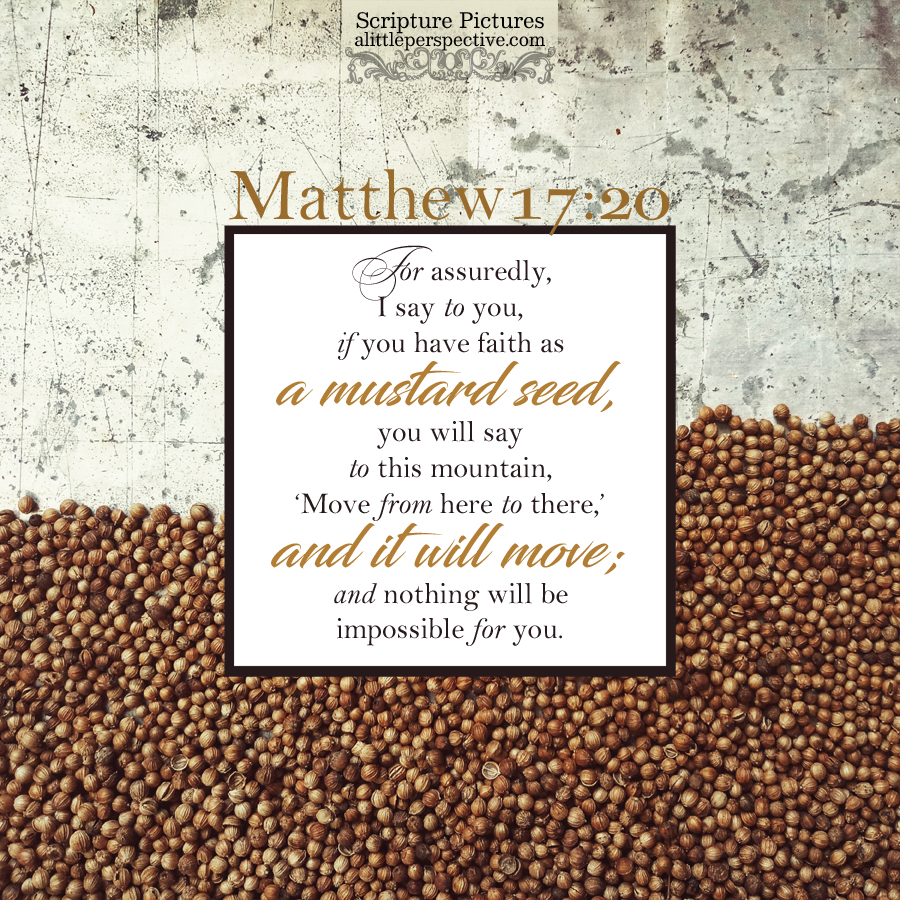Read Matthew 17 at Bible Gateway.
Mat 17 outline:
Mat 17:1-9, Jesus transfigured on the mount
Mat 17:10-13, The disciples’ question about the coming of Elijah (John the Baptist)
Mat 17:14-21, Jesus casts out a demon from a boy after the disciples could not
Mat 17:22-23, Jesus foretells His death and resurrection
Mat 17:24-27, Peter, Jesus, and the temple tax
Mat 16:13-17:27 chiastic structure:
1a) Mat 16:13-16, Who Jesus is;
1) Mat 16:13-14, Who men say He is: John the Baptist, Elijah, or prophet;
2) Mat 16:15-16, Who He is: the Messiah, Son of the living God;
1b) Mat 16:17-19, On the rock of belief in Messiah I will build My church + Hades shall not prevail against it;
1c) Mat 16:20, He commanded His disciples to tell no one that He was the Messiah;
1d) Mat 16:21-26, Peter rebukes Jesus + Jesus rebukes Satan;
central axis) Mat 16:27-17:9, The glory of the Son of Man in His kingdom;
1a) Mat 16:27-28, The Son of Man will come in the glory of His Father and His kingdom;
1b) Mat 17:1, Jesus took Peter, James, and John up a high mountain;
1c) Mat 17:2-3, They saw Jesus transfigured and talking with Moses and Elijah;
1d) Mat 17:4, Peter answered;
central axis) Mat 17:5-6, This is My beloved Son in whom I am well pleased; listen to Him!
2d) Mat 17:7, Jesus answered;
2c) Mat 17:8, They saw no one but Jesus alone;
2b) Mat 17:9a, They came down from the mountain;
2a) Mat 17:9b, Tell the vision to no one until the Son of Man is risen from the dead.
2d) Mat 17:4-8, Peter’s suggestion rebuked by the heavenly Father;
2c) Mat 17:9-13, He commanded them to tell the vision to no one until He was raised from the dead;
2b) Mat 17:14-21, Jesus casts out a demon from an epileptic (disciples could not because of unbelief);
2a) Mat 17:22-27, Who Jesus is;
1) Mat 17:22-23, Who men say He is: He will be betrayed by men and killed (as a criminal);
2) Mat 17:24-27, Who He is: tax not applicable to sons.
Because elements of this structure pair with elements in the greater chiastic structure for the whole book of Matthew, some of the elements of this smaller structure overlap (we have seen this before, and is actually helpful phenomenon in identifying sections which have pairs elsewhere).
The B pair is most interesting to me. Peter has a revelation of faith, knowing that Yeshua is the Messiah, the Son of God, who has been prophesied to come from Torah and the Prophets. On that unshakable rock of faith – who Messiah Yeshua is – the ekklesia will be built which Hades cannot prevail against. Just a cursory glance through church history, however, reveals that Hades has often prevailed against the church. So the Scripture is giving us a key to the kingdom, if we can uncover it.
Its pair is the healing of the epileptic boy. The disciples do not prevail against the demon at first, to be able to cast it out (even though previously, when Jesus sent them out, they had prevailed against demons in His name, Mat 10). Jesus said it was because of their unbelief.
So on the front side, we have the Church built upon the rock of faith in Messiah, which Hades cannot prevail against; and on the back side we have the demon prevailing against the disciples because of their unbelief. In the casting out of the demon, Jesus revealed that this kind only comes out with prayer and fasting. However, Jesus did not take time away to go pray and fast, revealing that prayer and fasting was a regular practice of His devotional life.
Why would prayer and fasting give greater authority to the Church? To me, they are acts of humility, of a regular practice of worship and devotion which continually places the worshiper in subordination and dependence on the heavenly Father. So the works themselves do nothing for the level of our faith, except that they speak loudly where we believe the real authority lies – with the Father, to whom we give our worship and devotion, to whom we subject our flesh, and to whom Hades also must bow the knee in the name of Yeshua.

















Leave a Reply